Buying a diamond can be an overwhelming experience, but if you are familiar with the 7 characteristics of diamonds listed below, you will be able to think like a professional jeweler and have an easier time choosing which diamond to buy.
First, let's talk about the "4 C's," which stand for carat, color, clarity, and cut. After that, we'll go over the different fundamental diamond shapes, as well as fluorescence and diamond certificates.
The weight of a diamond is measured in carats according to the metric system. There are 200 milligrams in one carat, which is equal to 0.2 grams. There are one hundred "points" in a carat, and each point is equal to one one-hundredth of a carat. A carat can be subdivided into points. This enables measurements to be extremely precise, even down to the hundredth decimal place. You will find that the majority of the diamonds you come across will have their weights listed in carats or a fraction of a carat as you shop for them. On occasion, however, you will come across an exceptionally small diamond that will have its weight listed in points. Take care not to confound the term "carat" with "size" when referring to diamonds.
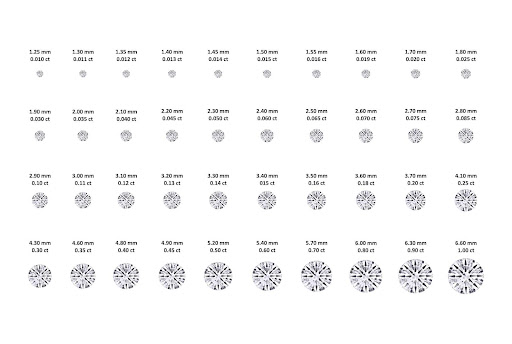
Only a select few diamonds can be described as completely colorless. The remaining ones come in a variety of yellow and brown hues, depending on the specific variety. After a diamond has been extracted from the ground, it is transported to a gem lab where it is examined by a team of gemologists who use a scale that ranges from D (colorless) to Z (very dark) (light yellow). The most valuable and therefore the most expensive diamonds are colorless varieties. In general, we recommend limiting your search to diamonds with a maximum grade of D or I.

When diamonds are formed extremely deep within the earth, they often develop internal inclusions as well as external blemishes along the way. The term "clarity" refers to the quantity, classification, and distribution of these flaws. On a scale that ranges from "Loupe Clean" (LC) to "Piqué 3," diamond clarity is denoted by a number between these two extremes (P3).
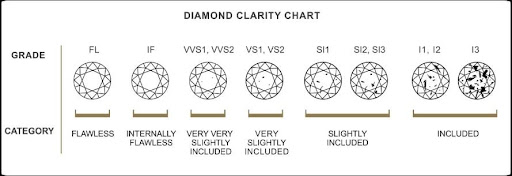
The cut of a diamond refers to the myriad of minute facets and angles that are cut into the gem in order to maximize the stone's ability to reflect light. A poorly cut diamond is lifeless and dull, whereas a diamond with high-quality facets and angles interacts with light in an efficient manner to create the following effects: Brightness is the reflection of white light, fire is the scattering of light in all the colors of the rainbow, and scintillation or sparkles are caused by light and dark patterns within the gem. Brightness is the reflection of white light. Fire is the scattering of light in all the colors of the rainbow. The proportions, the symmetry, and the polish are the three components that make up the cut grade. Each criterion is subjected to its own evaluation, which is then assigned one of the following quality ratings: Excellent (EX), Very Good (VG), Good (G), or Fair (F).
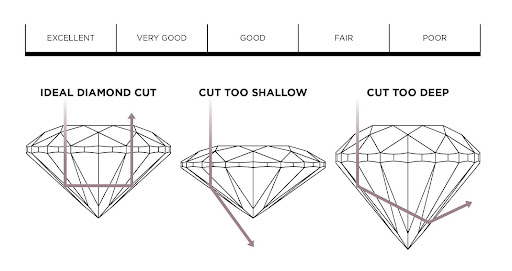
Diamonds are available in a wide variety of shapes. The most popular and valuable shape for diamonds is the round brilliant cut, which is also the most common. Because they reflect light in the most brilliant manner, round diamonds command a very high price.
The names given to the remaining diamond shapes are "fancy" shapes. Some of them, including the marquise, the pear, and the heart, are actually variations of the round brilliant cut, whereas the step cuts include any square or rectangular shapes, including the asscher. There is a wide range of fire and scintillation present in each and every fancy shaped diamond.
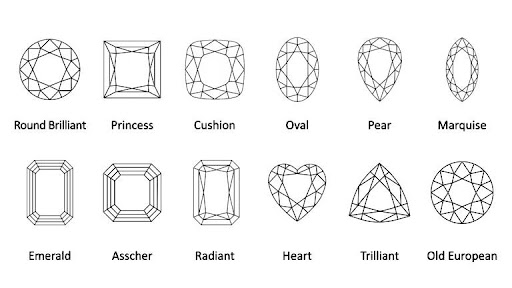
When exposed to the ultraviolet rays of sunlight, a very small percentage of diamonds—roughly 25 to 30 percent—emit a very faint blue glow. This phenomenon is called "blue fluorescence." Even though the fluorescence of a diamond is difficult to observe with the naked eye, there are times when an excessive amount of fluorescence can cause the diamond to appear cloudy.
You can find out how much fluorescence a particular diamond possesses by looking at the lab report for that diamond. Diamonds that emit fluorescence are given a rating of either none, very slight, medium, or strong by gem labs (according to the HRD Antwerp gem lab). Fluorescence is something that, in general, we recommend avoiding at all costs here at Diamond Registry.

Buying a diamond that comes with a certificate that has been issued by a reputable gem laboratory is the most foolproof way to buy a diamond. The Gemological Institute of America (GIA), the Hoge Raad voor Diamant (HRD), and the International Gemological Institute are the three most prominent gem labs in the world (IGI).
Certificates protect the buyer's investment by ensuring that the diamond will maintain its value over time and by listing the diamond's specific characteristics, such as its cut, color, clarity, and weight. Certificates also guarantee the diamond's quality. When purchasing a diamond, it is essential to make sure that it comes with a certificate.
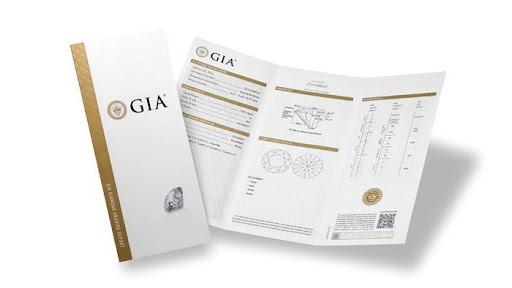
Sell your diamonds with ease with Diamond Registry’s comprehensive approach and vast global industry connections to help you find the best buyer for your diamond fast. Visit www.diamondregistry.com/sell-your-ring to take your first step to fast, easy and reliable way of selling your diamond.
Want to check and calculate diamond per carat instantly? Go to DR’s diamond price calculator www.diamondregistry.com/diamond-price-list/#calc-move-to to know how. Reliable and trusted carat calculator in the diamond industry since!

